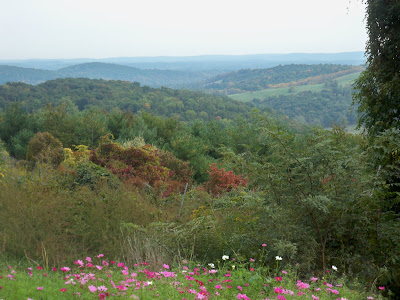Meadow Music
A walk through the meadow. I pull out my earphones to hear the rustle of grasses in the wind, the sound of children playing, a ball bouncing. Past the pond, where a family fishes. The mother is veiled, the little boy intent upon his lure.
Along the ribbon of pavement that bisects a field, I breathe in the scent of pine and cut grass. The Queen Anne’s lace is nodding, the tall weeds waving. Insects buzz, the backdrop noise of summer.
But soon enough, I dart into the woods. There was a place there where I had to duck under a tree that had collapsed upon itself in the storm. But only a bare patch remains. Already I smell autumn in the air, the acrid aroma of dry leaves. I shiver as I stride.



